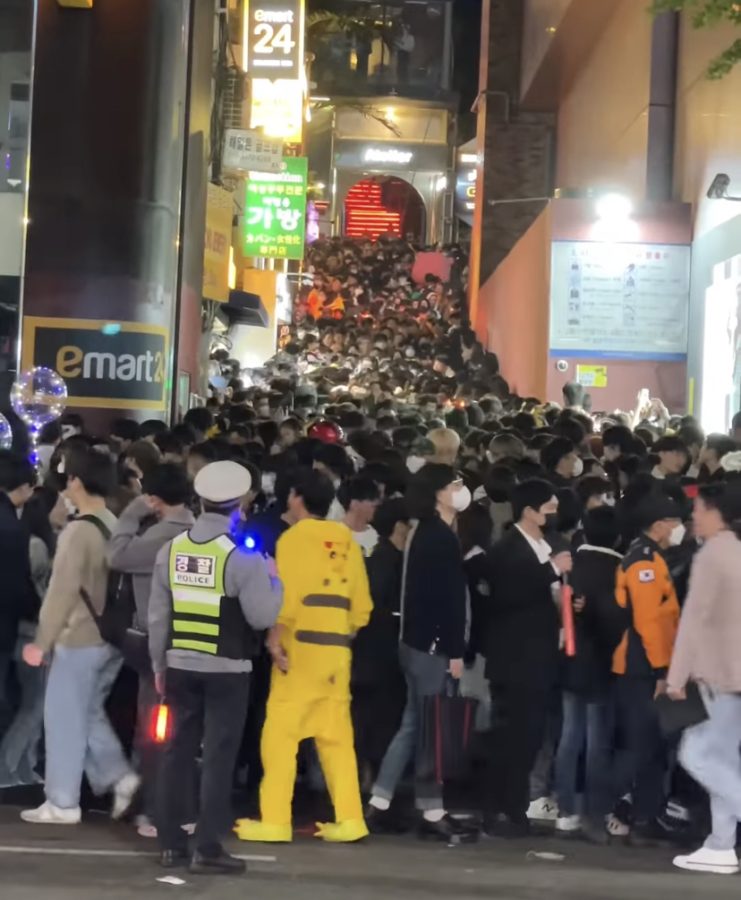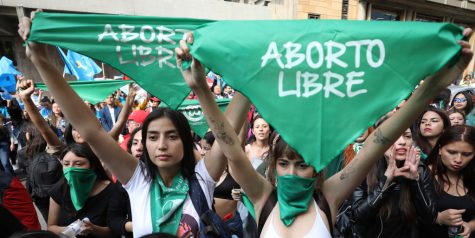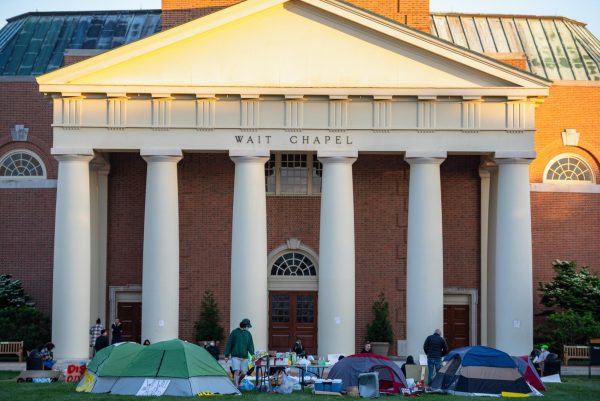Crowd control failure leads to tragedy in Seoul
Over 150 people lost their lives in a crowd surge
Overcrowding during the Itaewon festival in Seoul, South Korea led to many casualties.
November 16, 2022
What was supposed to be a festive Halloween celebration turned deadly when over 150 people died in a crowd crush in Itaewon, a popular nightlife district in Seoul, South Korea, on Oct. 29.
On the Saturday before Halloween, more than 100,000 people gathered on the streets of Itaewon for the first Halloween celebration since COVID-19 restrictions were lifted. Itaewon is known to attract many foreigners with its internationally influenced clubs, bars, restaurants and shops.
The district’s vibrant nightlife and diversity has made it the perfect place for young people, primarily in their 20s and 30s, to celebrate Halloween. In Seoul, the holiday has only become widely celebrated in the last decade as social media has enabled the spread of American culture within South Korea.
Halloween festivities thrive in Itaewon because of the district’s ability to cater to foreigners. Celebrations involve people dressed up in decorative and expressive costumes to go clubbing, in contrast to American traditions that revolve more around family-friendly activities such as trick-or-treating.
Unprecedented numbers of young people flocked to the streets of Itaewon to participate in the celebration. Without the necessary preparation required to control the huge crowds, these numbers resulted in one of South Korea’s deadliest peacetime tragedies.
The area is made up of narrow alleys and streets. The crowd crush began shortly after 10 p.m. in a small side street near the Itaewon metro station.
According to G. Keith Still, a visiting professor of crowd science at the University of Suffolk and crowd safety expert, a crowd rush differs from a stampede in that there is no space to run. Instead, high-density crowds leave little room for movement, resulting in compressed bodies
“Blood supply gets cut off, oxygen gets cut off, you can’t breathe, and it results from compressive restrictive asphyxia, people suffocate,” Still said.
As people tried to move through the side street in opposite directions, the small, sloping space turned into a death trap. Once caught in the crowd surge, limited mobility made it difficult for people to prevent being swept away in a domino effect.
This tragedy occurred as a result of poor crowd management and a lack of proper event planning. Since the Halloween celebration was to be one of the first major gatherings since the pandemic began, high numbers of people were expected.
Though the actual number of those in attendance surpassed these expected numbers, crowd management should have been better utilized by government officials and event organizers to prevent dangerously high crowd densities.
Prevention could have been in the form of designated authorities tasked with managing the flow of people and the number of those moving in and out of a certain area.
Planning on the part of government officials and the police is essential to preventing these dangerous situations because once the crowd crush begins, there is little that can be done to stop the ensuing chaos.
Criticism has fallen heavily on government officials such as President Yoon Suk-yeol, whose current approval ratings are around 36%. Additionally, the national police chief, Yoon Hee-Keun, admitted that the handling of the situation was “inappropriate” and the Minister of the Interior and Safety, Lee Sang-min, offered an apology on Nov. 1 that marked the first acknowledgment of responsibility from the government.
For events that lack a sole organizer, it is up to government officials to implement and enforce safety measures. Following the tragedy, President Yoon has begun to reassess the current systems in place and establish improved crowd control systems for other events that lack a single organizer.
But this comes too late for those who lost their lives in what was a preventable tragedy.
South Korea recently concluded their week-long period of national mourning at midnight of Nov. 5, but the implications of the devastating event will continue to reverberate throughout the country and the world. Government officials, authorities and event organizers must learn from this event, and in the future, take careful precautions to ensure the safety of those who gather in any capacity.























